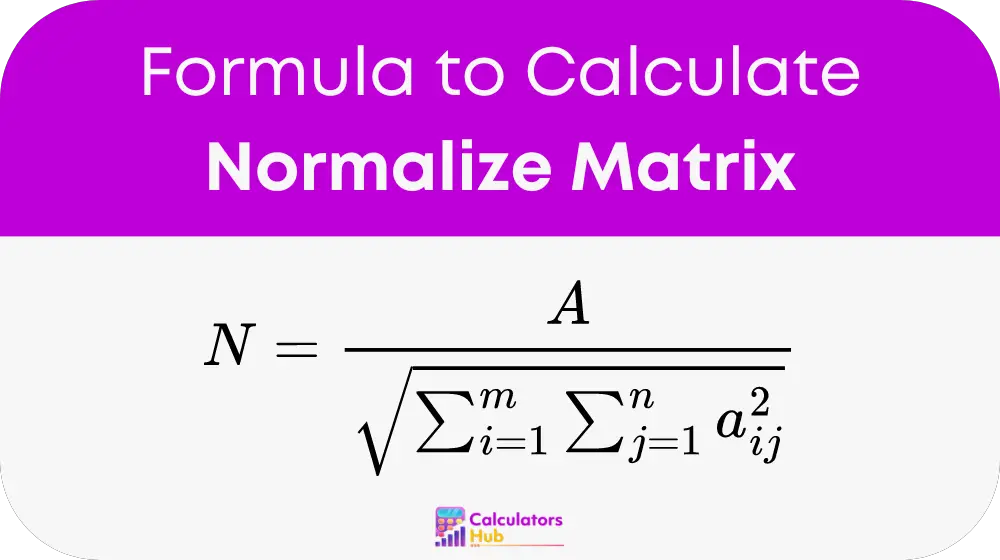A normalize matrix calculator is a tool designed to transform a matrix so that the length or magnitude of each row vector is 1. This process is crucial for many applications in data science and machine learning, where consistent data scales are necessary for accurate results.
Formula of Normalize Matrix Calculator
To normalize a matrix, the following formula is uses:
Given a matrix A, where each element aij is located in the i-th row and j-th column, the normalized matrix N is compute as follows:

Here:
- m is the number of rows in matrix A.
- n is the number of columns in matrix A.
- aij represents the element in the i-th row and j-th column.
- ∑ denotes summation over all elements in the matrix.
This formula ensures each row vector in the matrix has a magnitude of 1, which is crucial for many analytical methods to perform correctly.
Useful Table for Common Matrix Operations
| Operation | Description | Example Result |
|---|---|---|
| Matrix Addition | Add corresponding elements of two matrices | A + B |
| Scalar Multiplication | Multiply each element by a scalar | kA |
| Matrix Transpose | Flip matrix over its diagonal | A^T |
| Matrix Inversion | Compute the inverse of a matrix | A^-1 |
Example of Normalize Matrix Calculator
Consider the matrix A: [1, 2] [3, 4]
Using our normalization formula, the normalized matrix N will be: N = A / sqrt(1^2 + 2^2 + 3^2 + 4^2) N = A / sqrt(30)
This results in each element being scale down so that the magnitude of the rows is 1.
Most Common FAQs
Normalization adjusts the scale of the data in a matrix to unit norm, while standardization adjusts data to have zero mean and unit variance, crucial for many statistical methods and machine learning algorithms.
Normalization ensures that all features contribute equally to the model's learning process, preventing biases associated with scale differences.
Yes, the normalize matrix calculator can handle any size of matrix. Making it a versatile tool for all kinds of data sets.